Sitting at 25 m (82 ft) wrapped in a completely tangled metallic chain that would make Mr. T envious, I often ask, “What have I gotten myself into?” Indeed, one may wonder why anyone would want to take a long, easily tangled brass chain to the depths of Australia’s Great Barrier Reef (GBR).
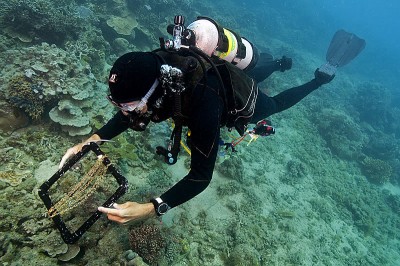
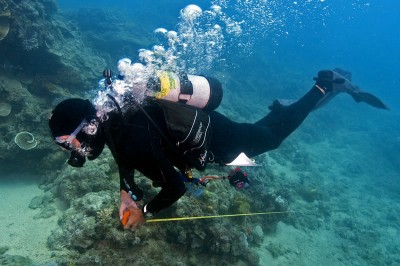
Laying out the chain and running out the transect tape.
It turns out that there is a particularly good reason, and it is rooted in the fact that many healthy coral reefs are not smooth, scoured structures (though they can be), but instead wrinkly masses of calcium carbonate covered by a thin veneer of life. The cracks and crevices between, for instance, coral bommies, or even within certain species of branching corals (e.g., staghorn coral thickets), provide myriad locations for thousands of species of fish and marine invertebrates (e.g., sponges, tunicates, and molluscs) to hide and/or permanently reside. It’s no surprise, then, that reefs with greater degrees of structural complexity tend to be associated with higher levels of both vertebrate and invertebrate diversity.
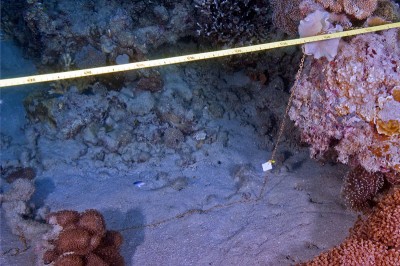
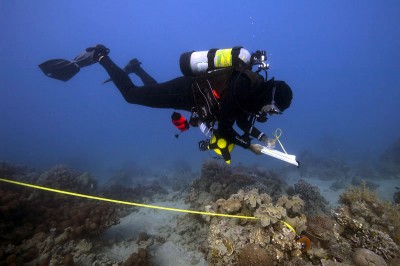
The difference between the tape measure and the chain shows reef rugosity.
By carefully laying down chain across the bottom and comparing the distance the chain covers to the linear distance (i.e., “as the crow flies” or “as the fish swims,” as the case may be) between two points, one can calculate a reef rugosity index, which serves as a proxy for how rugged the reef is. These reef rugosity measurements comprise one piece of the puzzle with respect to how the Living Oceans Foundation’s coral reef survey team is attempting to characterize each of ~180 reef sites to be visited across the Great Barrier Reef, Earth’s largest barrier reef ecosystem.
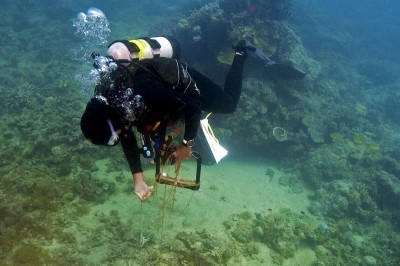
Not everything always goes as planned.
Photos by Ken Marks.